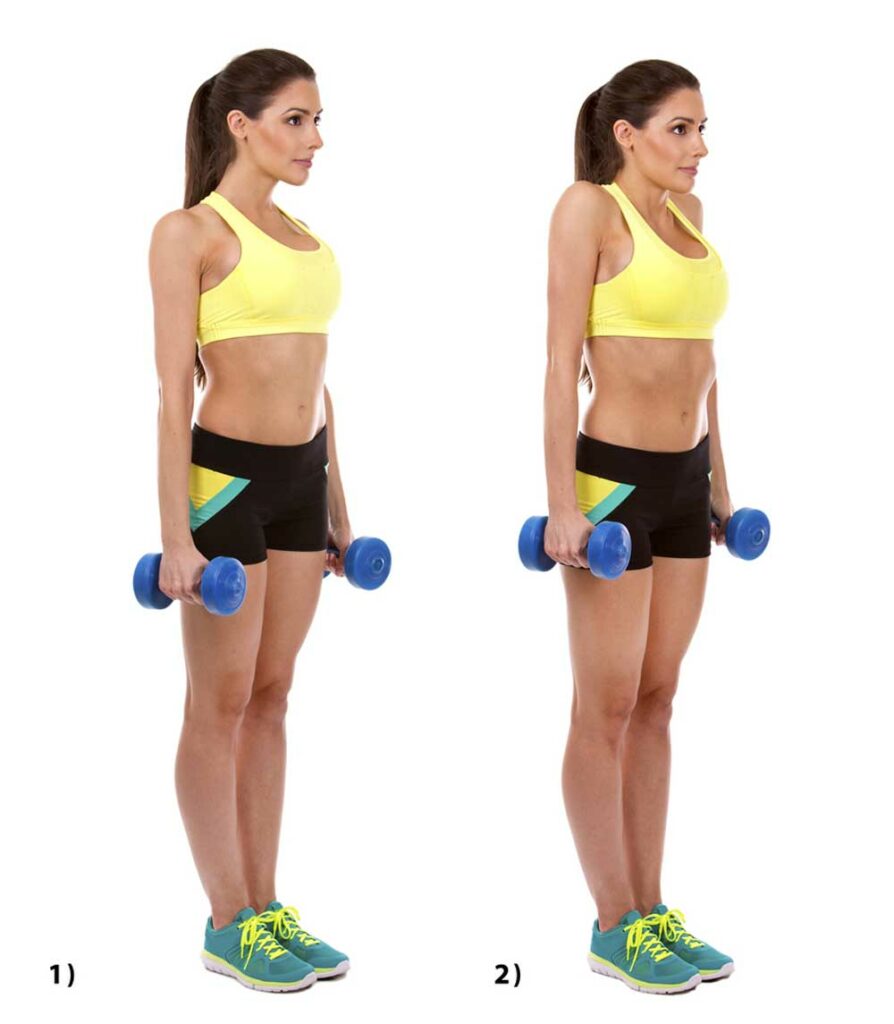
As a physiotherapist, I can’t even count the number of times someone has told me about how tight their muscles are. They almost always then proceed to have me feel the tightness so that I can validate this: “Feel how tight I am here! Can you feel that knot in my muscle?”
Most of the time these clients try everything they can to relieve this tightness. They stretch intensely, dig into their muscles with a tool or their hands, and go for massages. While these tactics often provide short-term relief, the tightness almost always comes back, and they find themselves repeating the cycle.
Does this sound like you? If so, please keep reading because today we’re going to cover why your muscles feel so darn tight, and what you need to know to fix this.
What is muscle tightness?
Although it may seem like it, other people can’t actually feel your tight muscles. That’s right, even trained healthcare professionals can’t really determine how tight your muscle is, or distinguish a tight muscle from a loose muscle. This is because muscle tightness is a subjective experience! We can’t reliably measure muscle tightness like we can measure other muscle properties, such as length or hardness.
When we compare someone’s report of how tight their muscle feels to its actual length or hardness, there is a poor correlation. This means that even if your muscle feels really tight, it might not actually be physically shortened or hardened. This is why stretching may feel good in the short term, but is unlikely to make a significant difference in the long run. We do not need to lengthen the muscle to get rid of this sensation.
If tightness is subjective, why can I feel the muscle knots?
At this point, you’re probably thinking about a time where you’ve felt “knots” in your muscles. These knots that you’ve felt are actually normal! That’s right, everyone will have spots in their muscles that feel like knots or ropes, but not everyone feels the same tightness. Different muscles will have different properties.
Some muscles are more ropy, some muscles are more flat, and some muscles feel like they have knots in them. It is important to recognize, however, that we cannot really change this.
Research has shown us that it takes about 2000 lbs of force to truly change connective tissue (the tissue that surrounds our muscles). This means that there is no way we can break up or release these “knots” in our muscles without applying an extreme amount of force (way more than you or your therapist would be able to apply).
So, why do you feel better after trying to break up the knots or stretch tight muscles?
You feel better because these techniques have an analgesic effect on your central nervous system. Sounds complicated, but this basically means that after stretching and trying to release tight muscles, your nervous system starts to relax and you feel less pain or tightness.
Nothing structural has changed (the muscle is still the same as it was before), but your nervous system has started to calm down, causing you to perceive less tightness and discomfort. This effect is temporary, as nothing has truly changed in your muscle tissue, which is why the tightness often returns the next day, or even later the same day.
What is causing my muscle tightness?
If your muscle isn’t shortened or hardened, what could be causing this sensation of tightness. Well, since we know that tightness is a subjective experience, we can consider it as being on the same spectrum as pain. In essence, the sensation of tightness is like a minor pain. As we’ve discussed in a previous post, pain is very complex and is influenced by many different factors. For example, two people with the same injury may have different amounts of pain due to factors such as stress, sleep, diet, mental health, and more. We can view tightness in the same way. While these other factors will play an important role in how much tightness you feel in your muscle, the tightness may also be related to a lack of movement. We often feel tightness after being in one position for a prolonged period of time. Our body loves movement, and when it doesn’t move, it gets upset. Movement helps maintain blood flow to all parts of our body, and keeps our muscles, joints, and bones healthy. When we stay in one position for too long, it decreases blood flow to certain areas.
The experience of muscle tightness may be our body trying to tell us that the muscle is not getting enough blood flow, and we need to do something to change that (move!). Again, this is why stretching or massaging may be helpful (these techniques can help restore blood flow), but if we continue to stay in prolonged positions, the tightness may keep coming back.
How do I get rid of my muscle tightness for good?
As mentioned previously, you may feel muscle tightness for multiple different reasons. Thus, in order to get rid of muscle tightness, we must tackle the problem in multiple ways. The first and easiest way to help is to avoid prolonged positions. If you’re someone who has to be in one position for long periods of time, it will be important to schedule frequent breaks where you can change position. A good rule of thumb is to take a break every 30 minutes to move around.
The next way we can help get rid of muscle tightness is to start resistance training the muscles that feel tight. Resistance training creates muscle adaptations, as well as an analgesic effect.
This means in the short term, resistance training may help decrease how stiff your muscles feel, and in the long term it may create adaptations that help prevent the stiffness all together!
For example, if you are someone who experiences tightness in your upper back and neck, you might want to try a resistance exercise like shoulder shrugs:

As pictured above, grab a pair of light dumbbells, hold them down at your sides, and shrug your shoulders up and slightly back. Squeeze at the top, and then slowly lower your shoulders back down.
Start out with light weight, doing 3 sets of 10 repetitions every other day. As it feels more comfortable, you can try increasing the weight, number of repetitions, or number of sets.
Finally, we can work on other aspects of our lives to help decrease muscle tightness. Working on managing lifestyle factors such as stress, diet, sleep, mood, overall exercise, and hydration can have profound impacts on how we feel physically.
It’s important not to ignore the role these factors may be playing in your muscle tightness!
Still not sure what to expect with your discomfort? Call us at 519-895-2020, or use our online booking tool on www.strivept.ca to book an appointment with one of our knowledgeable physiotherapists, and they will be sure to help you understand your injury.
Cheers,
Liam Newlands
Physiotherapist at Strive Physiotherapy and Performance